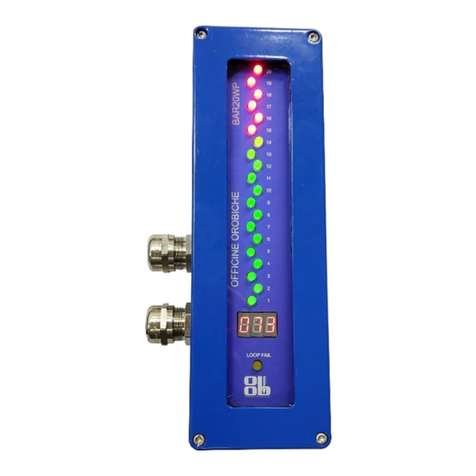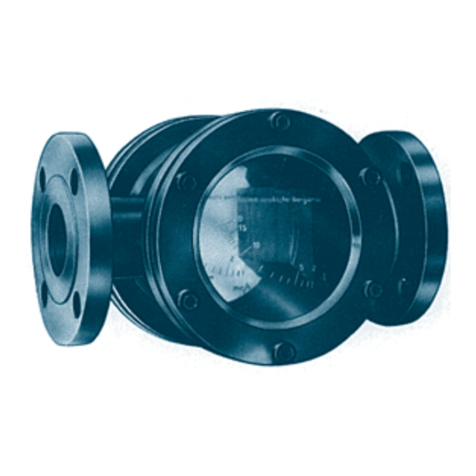
OFFICINE OROBICHE S.p.A. 6/9
24010 Ponteranica (Bergamo) ITALY - via Serena, 10 - Phone 0039/035/4530211 - Fax 0039/035/570546 - www.officineorobiche.it-e-mail:info@officineorobiche.it
******************************************************************************************************************************************************************
MAR.’13 Information subject to change without notice IST/164-I
Calibrating alarm contacts
Alarm contacts are generally factory pre-set.
In case of unexpected calibration to be performed at the building stage, take the following actions:
-remove the rear cover and loosen the cam block screws;
-place the float at the desired heights and turn the cams until the contact operates the switching;
as regards the maximum level actuation, turn the upper cam in the counter-clockwise direction;
as regards the minimum level actuation, turn the lower cam clockwise.
-tighten the cam block screws and ensure the contact operates at the desired point by manually sliding the float along the
slide rod.
Calibrating the 4/20 ma transmitter
The version with the 4/20mA transmitter is already factory set and does not require any further settings. They are
generally calibrated to send a 4 mA signal when the vessel is empty and a 20 mA one when the vessel is full.
Notes for Environments featuring explosion risks (Ex)
The testing equipment for the functional test shall be appropriate or certified for use in dangerous areas. Only qualified
persons can carry out this work. The competent technical staff shall connect and disconnect the electrical lines.
7.MAINTENANCE
Mechanical dial-type level indicators do not generally require any scheduled maintenance.
Periodically check, once every six months approximately, that the rod and the float are clean and the instrument operates
properly.
Notes for Environments featuring explosions risks (Ex)
Tests and maintenance over explosion proof sensors shall be carried out according to the criteria set forth in the EN
60079-17 standard.
-Terminals and wiring well tightened to avoid overheating.
-All replacement parts shall be original spare parts.
-Repairs of broken parts are not allowed.
7.1 WARNINGS
- NEVER open the lid without ascertaining that voltage has been disconnected;
- NEVER leave the housing without its own lid for longer than the inspection time:
- NEVER use the instrument at a temperature or a pressure that exceeds the values specified on the rating plate;
- NEVER perform settings or replace parts without having read the instructions beforehand; in case of doubts, please
contact our customer service department;
-NEVER lubricate any part of the instrument;
- If the instrument is used with very low or high temperatures, take all precautionary measures required to guarantee
personal protection to the personnel on duty during the various maintenance stages.
7.2 FLOAT REPLACEMENT
-Dismount the instrument and extract the rod and float assembly;
-Take care not to bend or hit the rod in a violent manner;
-Extract the float by unscrewing the retainer located on the rod bottom;
-Insert the new float (maintain the TOP position of the rod).
-Reassemble the instrument.
-Go through the steps described in paragraph Assembling sequence.





























